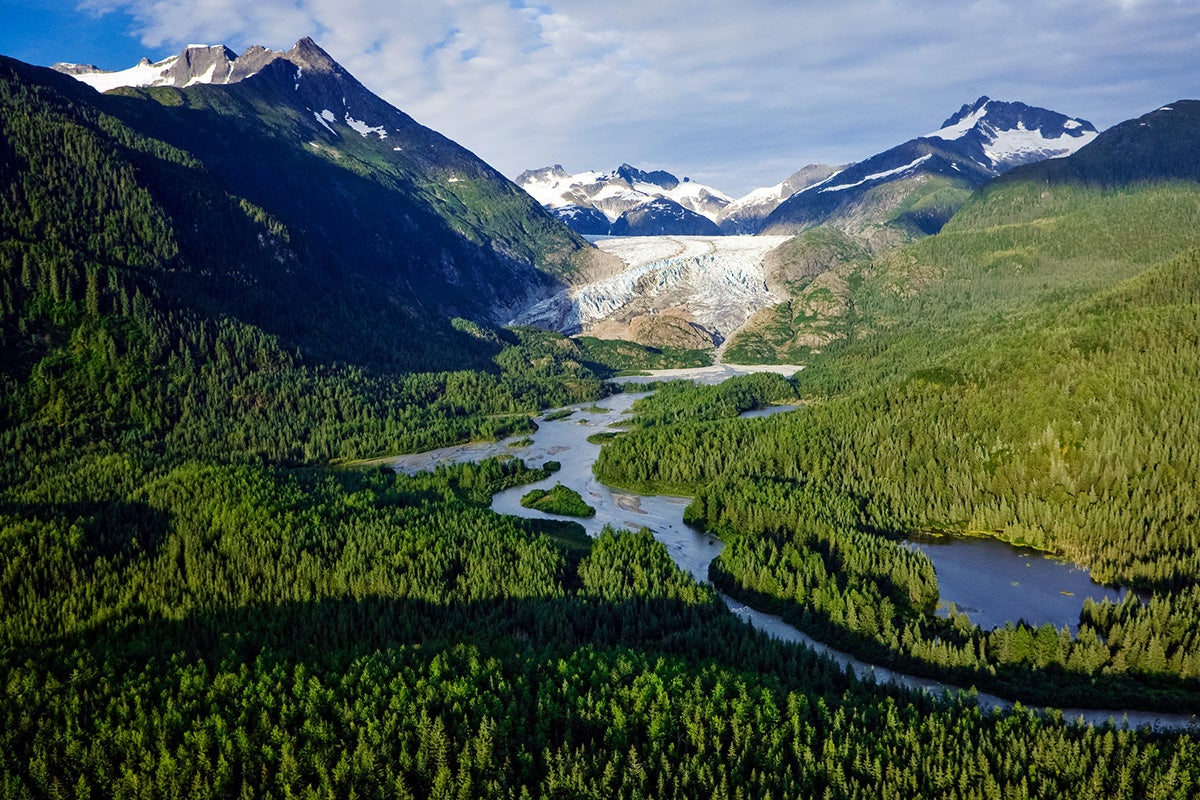‘America the Beautiful’ Points the Way Toward Necessary Conservation of Lands and Waters
Here are 4 actions the Biden administration should focus on right away.
“Nature is essential to the health, well-being, and prosperity of every family and every community in America.”
So says the Biden administration’s America the Beautiful report which lays the groundwork for confronting the entangled crises of biodiversity loss, climate change, and inequitable access to nature. The administration has set a goal of protecting 30% of America’s lands and waters for conservation by 2030 (30 x 30), and importantly has stated that it will set out to do so in a manner that is inclusive, driven by collaboration, and directed by science.
Because everyone has a stake in securing clean air, water, and healthy ecosystems, this plan explicitly calls for the engagement of local stakeholders, Tribes, businesses, municipalities, and more to take part in drawing up local and regional plans to preserve lands and waters.
They also must correct the historic asymmetry in environmental burdens and benefits in this country. It is unacceptable that low-income communities and communities of color continue to pay the price for our failure to protect the environment. The plans must also address the effects of climate change and environmental degradation on Tribal treaty rights, and acknowledge the role of indigenous communities who have long acted to protect biodiversity.
While research and stakeholder engagement will commence in regions across the country, here are four key actions the Biden administration should pursue immediately:
Tongass & Forest Protection
Forests, particularly old growth forests, are critical to the solution to avoid the worst impacts of climate change. They provide habitat to countless species and sequester vast amounts of climate-heating carbon. The Tongass National Forest in Alaska and the temperate rainforest in the Pacific Northwest are among the most biodiverse ecosystems remaining in the United States. These forests also provide the lifeblood of many indigenous communities.
Threats: Deforestation due to industrial logging and road-building threaten these critical landscapes.
Actions: The Biden administration’s Forest Service must restore the full protections of the Roadless Rule in the Tongass, which protected 9 million acres of the largest national forest in the country from clearcut logging until the Trump administration repealed it late last year.
The Forest Service should also place a moratorium on logging of mature and old growth forest and draw up a new rulemaking for permanent protections of the most carbon and ecologically rich forests across the country.
Protecting Indigenous Communities from Mining
American Indian, Alaska Native, and Native Hawaiian Indigenous communities have long worked to conserve biodiversity on their ancestral lands.
Threats: One of the largest threats to many indigenous communities across the country is the proliferation of massive, toxic mines. In Arizona the Tohono O’odham Nation is fighting to preserve sacred sites against the Rosemont mine, the largest proposed copper mine in North America. In Alaska, Kuskokwim Tribes oppose the Donlin mine in Alaska — potentially the largest gold mine in the world — which would imperil the streams and rivers they fish for salmon. These and other mines are poised to wipe out the way of life for many tribes across the west.
Action: One of the most critical actions the administration can take is to review and update the nation’s antiquated federal mining laws, which date back to 1872. The laws should prioritize protecting communities and habitat and make it less cumbersome to reject mines that are too dangerous or are proposed in the wrong place.
Protecting the Arctic
The Arctic National Wildlife Refuge is one of the most environmentally sensitive landscapes on Earth, and is also among the most vulnerable to overdevelopment and climate change. The G’wich’in people have lived on, hunted, and fished these lands for time immemorial. There are many mammal and fish species and more than 200 migratory and resident bird species that depend on the Refuge’s Coastal Plain for survival.
Threat: The previous administration opened up the Arctic Refuge to oil and gas drilling. Oil and gas development in the Arctic Refuge has the potential to release 4.3 billion metric tons of carbon dioxide — or the emissions equivalent of 929 million passenger cars — accelerating the collapse of Arctic climate systems and driving emissions even higher. This political move ignited a crisis for the Gwich’in people, who depend on the Refuge for their food security and have a sacred connection to the Coastal Plain.
Solution: President Biden showed strong leadership on this issue when he took Day One action by placing a temporary moratorium on oil and gas leasing activities in the Refuge. But in order to permanently protect the Refuge, the administration must urge Congress to repeal Section 20001 of the 2017 Tax Act and prevent future oil and gas lease sales.
Restoring Bedrock Environmental Laws
America the Beautiful acknowledges that “[t]here is no single metric — including a percentage target — that could fully measure progress toward the fulfillment” of our nation’s conservation goals. Conserved lands alone can’t save species that face myriad threats — from pollution to overexploitation. Strong environmental laws including the Endangered Species Act and the National Environmental Policy Act are meant to prevent wildlife from going extinct and to protect and empower people to defend their rights to clean air, water, and healthy communities.
Threats: The last administration dramatically weakened environmental laws which are now hampering the American public’s ability to address the biodiversity and climate crises at the necessary scope and scale.
Actions: The administration must also follow through on its review of harmful regulatory actions by the previous administration and restore bedrock environmental laws, including the National Environmental Policy Act and the Endangered Species Act.
Established in 1989, Earthjustice's Policy & Legislation team works with champions in Congress to craft legislation that supports and extends our legal gains.
